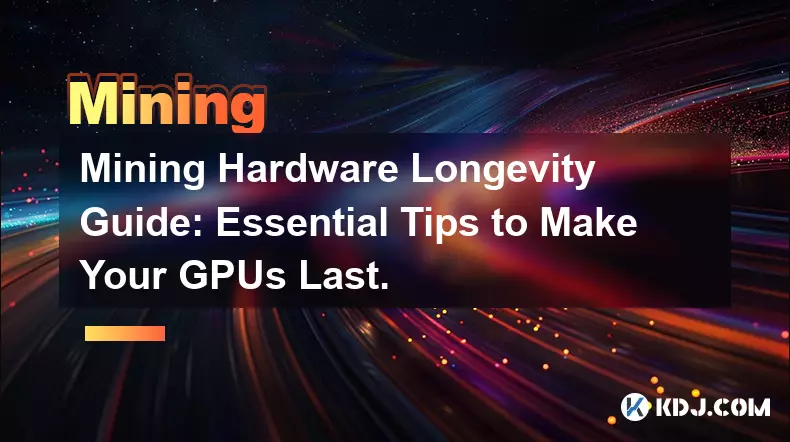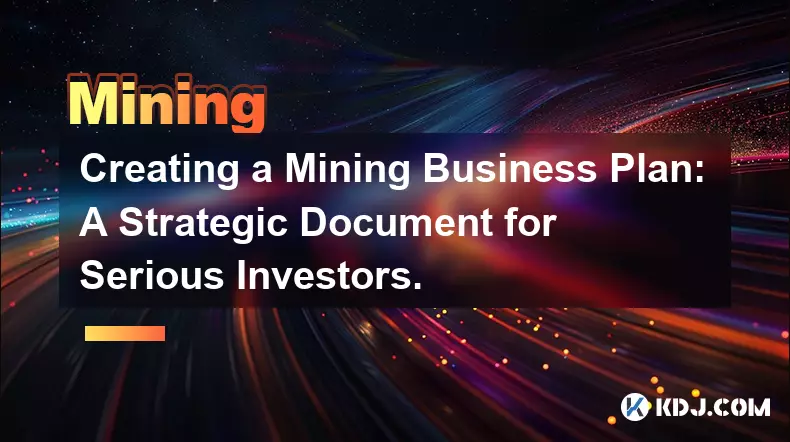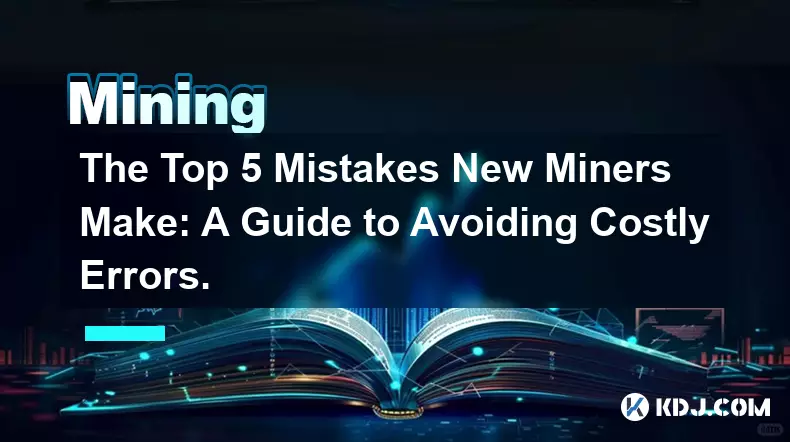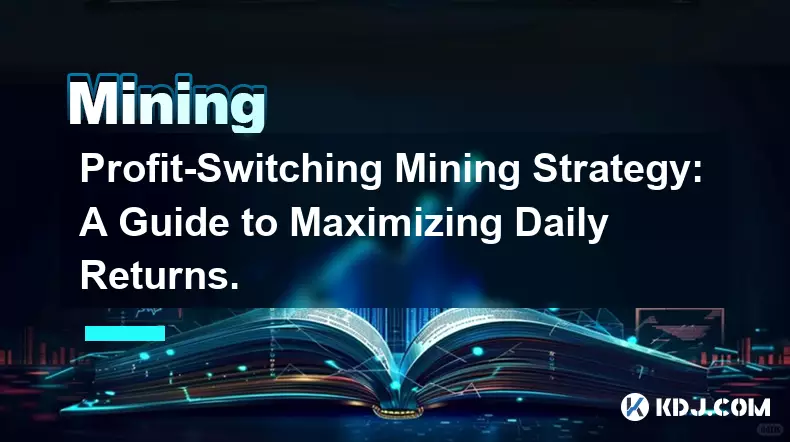-
 bitcoin
bitcoin $107015.826941 USD
-2.18% -
 ethereum
ethereum $3637.352324 USD
-5.18% -
 tether
tether $0.999831 USD
-0.02% -
 xrp
xrp $2.338078 USD
-6.23% -
 bnb
bnb $998.272150 USD
-6.97% -
 solana
solana $167.598257 USD
-10.12% -
 usd-coin
usd-coin $0.999863 USD
0.01% -
 tron
tron $0.282573 USD
-5.09% -
 dogecoin
dogecoin $0.169891 USD
-7.39% -
 cardano
cardano $0.557554 USD
-7.03% -
 hyperliquid
hyperliquid $39.914802 USD
-5.85% -
 chainlink
chainlink $15.414549 USD
-9.97% -
 bitcoin-cash
bitcoin-cash $510.361911 USD
-4.26% -
 ethena-usde
ethena-usde $0.999194 USD
-0.03% -
 stellar
stellar $0.282092 USD
-6.07%
How to set up dual mining for two cryptocurrencies?
Dual mining allows simultaneous cryptocurrency mining on compatible algorithms, maximizing GPU efficiency and profitability with proper hardware, software, and pool configuration.
Oct 26, 2025 at 09:18 pm

Understanding Dual Mining in Cryptocurrency
1. Dual mining refers to the process of simultaneously mining two different cryptocurrencies using the same hardware setup. This approach maximizes the utilization of GPU or ASIC resources by allocating computational power across multiple blockchains. Miners often combine a primary coin with a secondary one that requires less intensive algorithms, allowing both processes to run efficiently without significant performance loss.
2. The concept relies on compatible mining software that supports dual algorithms. For instance, miners can run Ethereum (Ethash) alongside Ravencoin (KawPow), as some mining platforms allow this combination due to similar memory and processing demands. Compatibility between algorithms is essential; mismatched workloads may lead to instability or reduced hash rates.
3. Not all coins are suitable for dual mining. The selection depends on algorithm synergy, profitability, and network difficulty. Coins like Beam, Zilliqa, and Ergo have been popular secondary options because they use lightweight proof-of-work mechanisms that don’t overwhelm the system when paired with heavier primary chains.
4. Profitability calculators play a crucial role in determining whether dual mining is worthwhile. These tools analyze current market prices, block rewards, electricity costs, and estimated hash rates to project earnings from both coins. Miners must regularly monitor these metrics as fluctuations in either cryptocurrency’s value can shift the balance of returns.
5. Stable internet connectivity and reliable power supply are critical for maintaining consistent dual mining operations. Any interruption can result in lost shares and reduced payouts from both networks.
Selecting Compatible Hardware and Software
1. High-performance GPUs such as NVIDIA RTX 3070, 3080, or AMD RX 6700 XT are commonly used for dual mining due to their memory bandwidth and parallel processing capabilities. These cards support multiple algorithm executions with minimal throttling when properly configured.
2. Mining software like T-Rex, NBMiner, and GMiner offer built-in dual mining modes. Each platform provides configuration files where users define primary and secondary coin parameters, pool addresses, wallet keys, and intensity settings. Proper setup ensures smooth communication between the miner and both blockchain networks.
3. BIOS modifications on graphics cards can enhance efficiency during dual mining. Adjustments such as undervolting, increasing memory clock speeds, and optimizing fan curves help maintain lower temperatures and reduce power draw while sustaining high hash rates.
4. Operating systems like HiveOS or SimpleMining OS simplify management of multi-GPU rigs. These Linux-based platforms include web dashboards that display real-time statistics for each card and both mining streams, enabling quick troubleshooting and tuning adjustments.
5. Always verify driver compatibility before launching dual mining sessions. Outdated or incorrect drivers can cause crashes, rejected shares, or failure to detect secondary algorithms.
Configuring Pools and Wallets for Dual Output
1. Miners must create accounts with mining pools that support dual algorithms. Examples include Flypool, Nanopool, and 2Miners, which accept submissions for both Ethash and KawPow or similar combinations. Registration typically involves providing a valid wallet address for each coin being mined.
2. Separate wallets are required for each cryptocurrency. For example, an Ethereum wallet (like MetaMask) handles ETH rewards, while a dedicated Ravencoin wallet stores RVN earnings. Mixing addresses can lead to irreversible fund loss if sent to incompatible networks.
3. Configuration files need precise syntax to direct hashrate splits. A typical command line might specify “--dual-mode ravn” to activate Ravencoin mining alongside Ethereum, along with corresponding pool URLs and worker names. Errors in formatting can prevent connection or disable one of the mining threads.
4. Monitoring tools integrated into pool dashboards show accepted and rejected shares for both coins. Regular checks ensure neither chain experiences excessive stale submissions, which could indicate latency issues or insufficient bandwidth allocation.
5. Enable automatic payout thresholds based on minimum balance requirements to avoid transaction fees eating into profits from smaller reward amounts.
Frequently Asked Questions
What happens if one of the mining pools goes offline?If the primary pool disconnects, most dual mining software will halt both operations unless fallback servers are specified in the config file. Secondary mining usually depends on the stability of the main connection, so redundancy planning is necessary.
Can I split my rig to mine two separate dual setups?Yes, individual GPUs within a single rig can be assigned different dual mining configurations through advanced scripting. However, this increases complexity and requires careful resource allocation to prevent memory contention or thermal overload.
Do ASIC miners support dual mining?Most ASIC devices are designed for a single algorithm and do not support dual mining. Their architecture focuses on maximizing efficiency for one specific hashing function, making them incompatible with simultaneous multi-algorithm execution.
How are taxes handled when earning two different cryptocurrencies?Each mined coin is considered taxable income at its fair market value on the date of receipt. Miners must track the value and quantity of both assets independently and report them according to local regulations, often requiring detailed transaction logs and wallet records.
Disclaimer:info@kdj.com
The information provided is not trading advice. kdj.com does not assume any responsibility for any investments made based on the information provided in this article. Cryptocurrencies are highly volatile and it is highly recommended that you invest with caution after thorough research!
If you believe that the content used on this website infringes your copyright, please contact us immediately (info@kdj.com) and we will delete it promptly.
- ADA Slowdown, Maxi Doge, and the Meme Coin Mania: What's the Hype?
- 2025-11-04 20:50:12
- Ethereum, Crypto, and the $1 Target: A New Era?
- 2025-11-04 21:00:12
- Zone Nine: Nihilation - A Deep Dive into the Zombie Survival Closed Playtest
- 2025-11-04 21:10:12
- Trust Wallet VIP Program: TWT Powers a New Era of User Loyalty
- 2025-11-04 21:05:01
- Stewards Inc., Token-for-Equity, and the Dolomite PIPE: A New Era for Digital Asset Treasury
- 2025-11-04 21:05:14
- Meme Coins, Degen Alpha, and Market Updates: Riding the Crypto Wave in Style
- 2025-11-04 21:10:02
Related knowledge

Mining Hardware Longevity Guide: Essential Tips to Make Your GPUs Last.
Nov 01,2025 at 04:00pm
Mining Hardware Longevity Guide: Essential Tips to Make Your GPUs LastAs cryptocurrency mining continues to attract both hobbyists and professionals, ...

Creating a Mining Business Plan: A Strategic Document for Serious Investors.
Nov 04,2025 at 08:54pm
Defining the Core Objectives of a Cryptocurrency Mining Venture1. Establishing a clear mission for the mining operation ensures alignment with investo...

The Top 5 Mistakes New Miners Make: A Guide to Avoiding Costly Errors.
Nov 01,2025 at 10:18am
The Top 5 Mistakes New Miners Make: A Guide to Avoiding Costly Errors Entering the world of cryptocurrency mining can be both exciting and overwhelmin...

The Miner's Guide to Market Cycles: When to Hold and When to Sell.
Nov 03,2025 at 07:55pm
The Miner's Guide to Market Cycles: When to Hold and When to Sell Bitcoin mining has evolved from a hobbyist pursuit into a highly competitive, capita...

Profit-Switching Mining Strategy: A Guide to Maximizing Daily Returns.
Nov 03,2025 at 11:55am
Understanding Profit-Switching in Cryptocurrency Mining1. Profit-switching is a dynamic mining strategy that automatically redirects computational pow...

Setting Up Mining Alerts: A Guide to Monitoring Your Rigs 24/7.
Nov 03,2025 at 02:54pm
Why Continuous Monitoring Is Crucial in Cryptocurrency Mining1. Cryptocurrency mining operations rely heavily on hardware stability and network connec...

Mining Hardware Longevity Guide: Essential Tips to Make Your GPUs Last.
Nov 01,2025 at 04:00pm
Mining Hardware Longevity Guide: Essential Tips to Make Your GPUs LastAs cryptocurrency mining continues to attract both hobbyists and professionals, ...

Creating a Mining Business Plan: A Strategic Document for Serious Investors.
Nov 04,2025 at 08:54pm
Defining the Core Objectives of a Cryptocurrency Mining Venture1. Establishing a clear mission for the mining operation ensures alignment with investo...

The Top 5 Mistakes New Miners Make: A Guide to Avoiding Costly Errors.
Nov 01,2025 at 10:18am
The Top 5 Mistakes New Miners Make: A Guide to Avoiding Costly Errors Entering the world of cryptocurrency mining can be both exciting and overwhelmin...

The Miner's Guide to Market Cycles: When to Hold and When to Sell.
Nov 03,2025 at 07:55pm
The Miner's Guide to Market Cycles: When to Hold and When to Sell Bitcoin mining has evolved from a hobbyist pursuit into a highly competitive, capita...

Profit-Switching Mining Strategy: A Guide to Maximizing Daily Returns.
Nov 03,2025 at 11:55am
Understanding Profit-Switching in Cryptocurrency Mining1. Profit-switching is a dynamic mining strategy that automatically redirects computational pow...

Setting Up Mining Alerts: A Guide to Monitoring Your Rigs 24/7.
Nov 03,2025 at 02:54pm
Why Continuous Monitoring Is Crucial in Cryptocurrency Mining1. Cryptocurrency mining operations rely heavily on hardware stability and network connec...
See all articles










































































